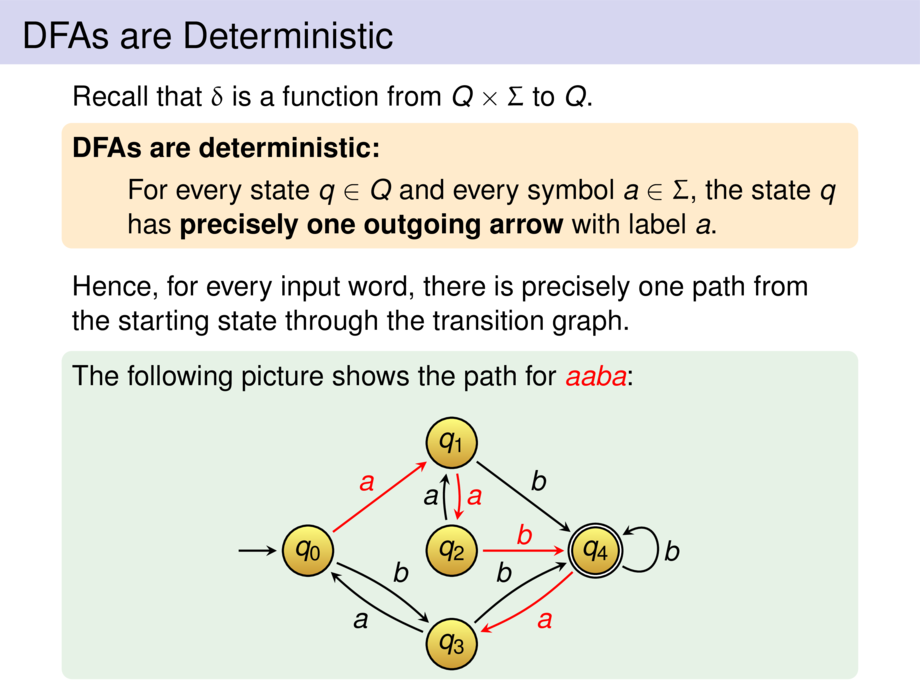



































































































41/122
\begin{frame}{DFAs are Deterministic}
Recall that $\delta$ is a function from $Q \times \Sigma$ to $Q$.
\begin{goal}{}
\emph{DFAs are deterministic:}
\begin{itemize}
\item []
For every state $q\in Q$ and every symbol $a \in \Sigma$,
the state $q$ has \emph{precisely one outgoing arrow} with label $a$.
\end{itemize}
\end{goal}
\pause\medskip
Hence, for every input word, there is precisely one path
from the starting state through the transition graph.
\begin{exampleblock}{}
The following picture shows the path for \alert{$aaba$}:
\begin{center}
\begin{tikzpicture}[default,node distance=20mm,->]
\node (q0) [state] {$q_0$}; \draw ($(q0) + (-10mm,0mm)$) -- (q0);
\node (q2) [state,right of=q0] {$q_2$};
\node (q4) [fstate,right of=q2] {$q_4$};
\begin{scope}[node distance=15mm]
\node (q1) [state,above of=q2] {$q_1$};
\node (q3) [state,below of=q2,node distance=13mm] {$q_3$};
\end{scope}
\draw [red] (q0) to node [label,above left] {$a$} (q1);
\draw (q0) to[bend left=10] node [label,above right] {$b$} (q3);
\draw [red] (q1) to[bend left=10] node [label,right] {$a$} (q2);
\draw (q1) to node [label,above right] {$b$} (q4);
\draw (q2) to[bend left=10] node [label,left] {$a$} (q1);
\draw [red] (q2) to node [label,above] {$b$} (q4);
\draw (q3) to[bend left=10] node [label,below left] {$a$} (q0);
\draw (q3) to[bend left=10] node [label,above left] {$b$} (q4);
\draw [red] (q4) to[bend left=10] node [label,below right] {$a$} (q3);
\draw (q4) to[rloop] node [label,right] {$b$} (q4);
\end{tikzpicture}
\end{center}
\end{exampleblock}
\end{frame}

